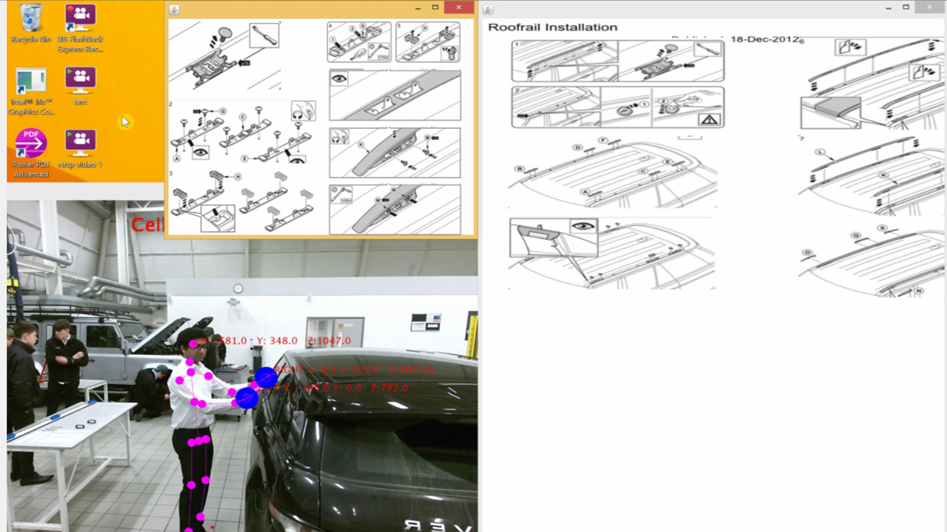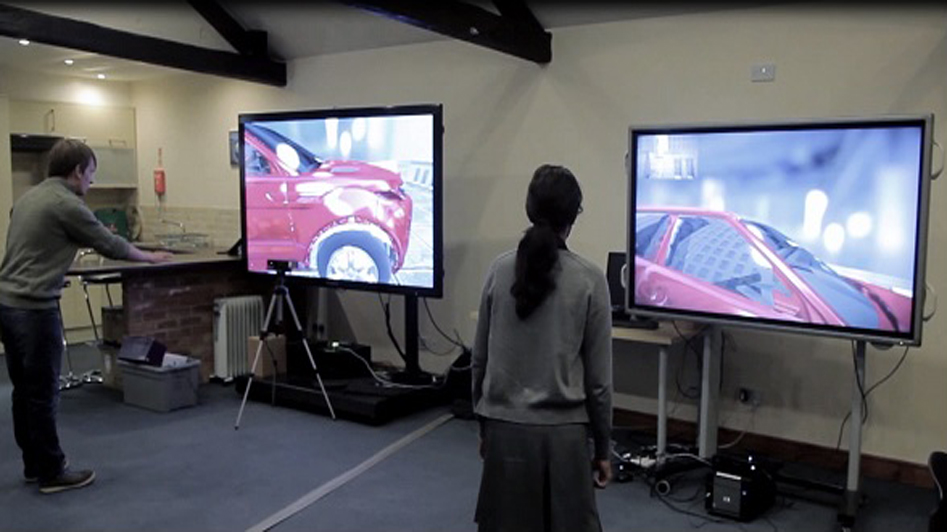The platform enables teams to work remotely on a common engineering problem in real time and get immediate feedback from each other which is vital for collaborative design.
Key Facts
- We have prototyped a platform that enables remote, real-time collaboration between geographically separated teams.
- We made unique use of low-cost gaming depth imaging sensors and virtual environments to develop the platform.
- The platform enables just in time contextual information to be provided to engineers as well as the sharing of task contexts, knowledge, skills and transfer of expert services.
- We validated our approach using an automotive use case.
Impact of our research
In this highly globalised manufacturing ecosystem, product design and verification activities, production and inspection processes, and technical support services are spread across global supply chains and customer networks. Therefore, a platform for global teams to collaborate with each other in real-time to perform complex manufacturing-related tasks is highly desirable. The unique functionality of the proposed platform is the sharing of physical contexts during a collaboration session by not only exchanging human actions but also the effects of those actions on the workpieces and the task environment. Additionally, just in time contextual information increases the productivity of engineers.
Why the research was commissioned
This research investigated the design and development of a remote real-time collaboration platform. Human motion capture technology powered by infrared light based depth imaging sensors borrowed from the gaming industry was used, and a synchronous data transfer protocol from computer networks. By combining both technologies in a virtual reality framework, we were able to replicate physical environments in a virtual one and effectively transfer the actions of humans across geographically separated distances.
This enabled our partner Jaguar Land Rover have a platform that would enable engineers view and solve problems in a different part of the world without having to fly staff members to the location.
Why Cranfield?
Our close relationship with industry helped us get an understanding of the problem they were experiencing. As a result, it was possible to frame the problem as well as the potential solution in the research proposal. The application of gaming technology was also novel and we had 3-4 years track record in applying it to different problems. Furthermore, because our second partner’s industry was gaming, it was helpful to gain their input into challenges related to deployment thereby strengthening the proposal.
Facilities used
- Manufacturing Informatics Lab


